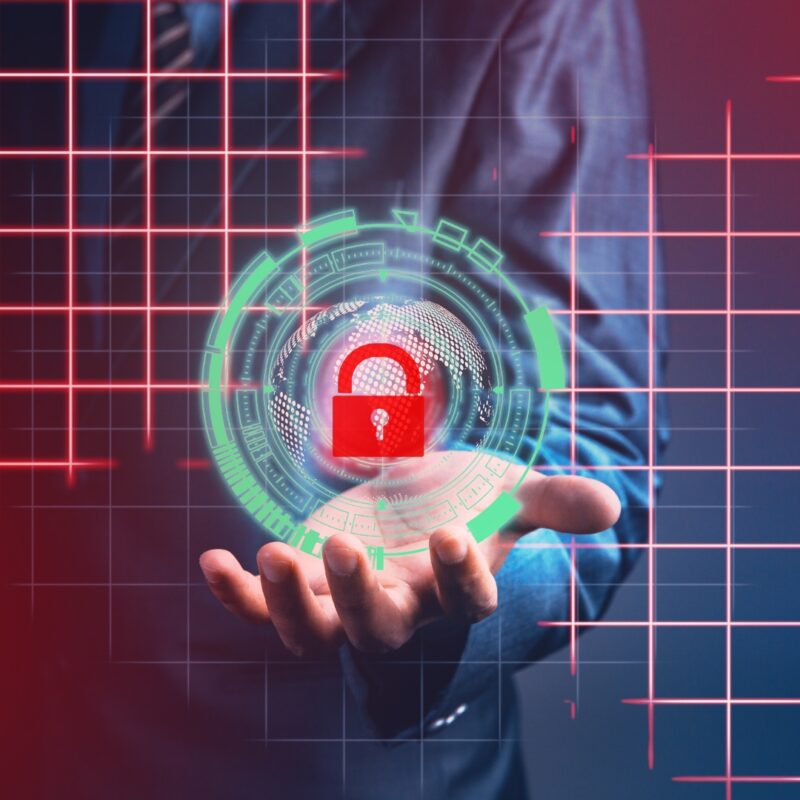Online learning is now a significant part of school and college, allowing students to study from anywhere. However, because we use the internet for learning, we need to make sure it’s safe. Moreover, as more schools and colleges adopt online tools, the chances of computer problems, like hacking, go up. Consequently, it’s crucial to protect online education. This article talks about “Cybersecurity in Online Education.” It explores how we can ensure that students and teachers are safe when they learn online. Join us as we discuss the problems, solutions, and why cybersecurity is so important for online education.

The Cyber Threat Landscape in Online Education
Online learning faces big risks because the cyber threat situation keeps changing. The sector is open to different harmful activities such as phishing attacks, malware, ransomware, and data breaches. These threats can mess up the learning process, expose important information, and harm the reputation of schools. People, schools, and whole learning systems might be targeted by these cybersecurity threats. This shows the urgent need for proactive steps to lessen risks and make sure online education spaces are secure.
Impacts of Cyber Threats on Online Education
Cyber threats in online education have repercussions that extend beyond mere technological disruptions. The exposure of personal information, encompassing student records, financial details, and academic achievements, through data breaches poses a significant risk. This sensitive data becomes susceptible to identity theft, financial fraud, and the tarnishing of reputations.
Moreover, the impacts of cyber threats extend to the erosion of trust and confidence among students, parents, and educators in online learning platforms. Perceived insecurity of these platforms may discourage participation and impede the widespread adoption of online education, emphasizing the imperative of addressing cybersecurity challenges to maintain a secure and trustworthy learning environment.
Strategies to Enhance Cybersecurity in Online Education
Enhancing cybersecurity in online education demands a multifaceted strategy, incorporating technology, policy frameworks, and comprehensive training initiatives. Here are key strategies to fortify the online learning environment:
Implementing Robust Security Measures
Educational institutions must fortify their defenses by implementing robust security measures. This includes deploying firewalls, intrusion detection systems, data encryption, and conducting regular security audits to safeguard networks, systems, and sensitive data.
Educate and Train Stakeholders
Ongoing cybersecurity awareness training is essential for educators, students, and staff. This training should empower them to identify and thwart potential cyber threats. Topics covered should span from recognizing phishing attempts to promoting robust password hygiene and secure data handling practices.
Establishing Clear Cybersecurity Policies
Clear and concise cybersecurity policies should be established, delineating acceptable technology usage, data handling procedures, and incident reporting protocols. The effective communication of these policies ensures that all stakeholders are well-informed and aligned with cybersecurity guidelines.
Fostering a Culture of Cybersecurity
Embedding cybersecurity into the institutional culture is crucial. Regular communication, awareness campaigns, and incentive programs play pivotal roles in reinforcing the significance of cybersecurity. By doing so, institutions can encourage responsible behavior among educators, students, and staff, cultivating a collective commitment to online security.

Best Practices for Implementing Cybersecurity in Online Education
In addition to the general strategies outlined above, educational institutions can adopt specific best practices to enhance cybersecurity in online education:
Utilize Secure Online Platforms and Tools
When making choices regarding online learning platforms and tools, institutions should prioritize those equipped with robust security features. This includes the incorporation of data encryption, multi-factor authentication, and stringent access controls. Additionally, it is imperative that these platforms align with and adhere to relevant data privacy regulations to ensure a comprehensive security framework.
Effectively Manage User Access and Privileges
To fortify security measures, institutions must establish transparent access control policies. These policies should delineate access restrictions to sensitive data and systems based on the roles and responsibilities of individual users. Implementing the principle of least privilege is crucial, ensuring that users are granted access only to the resources essential for the performance of their designated tasks.
Regularly Update Software and Systems
Guarding against potential vulnerabilities requires a proactive approach. Educational institutions should routinely update software, operating systems, and security patches. By doing so, known vulnerabilities are addressed, and protection against emerging threats is enhanced. Establishing a systematic patching schedule is crucial, ensuring that updates are promptly applied across all devices and systems to maintain a resilient defense against cyber threats.
Implement Data Backup and Recovery Procedures
Safeguarding against potential data loss is paramount. To fortify resilience, institutions should implement regular data backup procedures, ensuring the protection of sensitive information in the face of cyberattacks or system failures. Simultaneously, establishing clear recovery procedures is imperative to swiftly and efficiently restore data and systems in the event of a security breach.
Monitor and Respond to Cybersecurity Incidents
Proactive monitoring of network activity is essential for identifying potential security incidents. Institutions should establish a robust process to promptly respond to these incidents, containing and remediating them swiftly to minimize their impact on the online learning environment.
Collaborate with Cybersecurity Experts
Strengthening cybersecurity defenses requires collaboration with experts in the field. Educational institutions should engage cybersecurity professionals to conduct regular security assessments, vulnerability scans, and penetration testing. This collaborative effort aims to identify and address potential weaknesses in both systems and networks.
Stay Informed about Cyber Threats
Remaining vigilant in the face of evolving cyber threats is critical. Educational institutions should stay informed about the latest cybersecurity risks and vulnerabilities. Subscribing to security advisories and alerts from reputable sources enables institutions to stay abreast of emerging risks and adopt effective mitigation strategies.

Foster a Culture of Open Communication
Building a resilient cybersecurity posture relies on open communication. Institutions should encourage stakeholders to openly communicate about cybersecurity concerns. Establishing clear reporting channels for incidents and suspicious activities facilitates prompt investigation and response, contributing to a proactive defense strategy.
Continuously Review and Adapt Cybersecurity Practices
In the dynamic landscape of cybersecurity, continuous improvement is essential. Institutions should regularly review and update cybersecurity policies, procedures, and training programs to adapt to evolving threats and technologies. This commitment to continuous improvement ensures the maintenance of a strong security posture in the ever-changing realm of online education.







